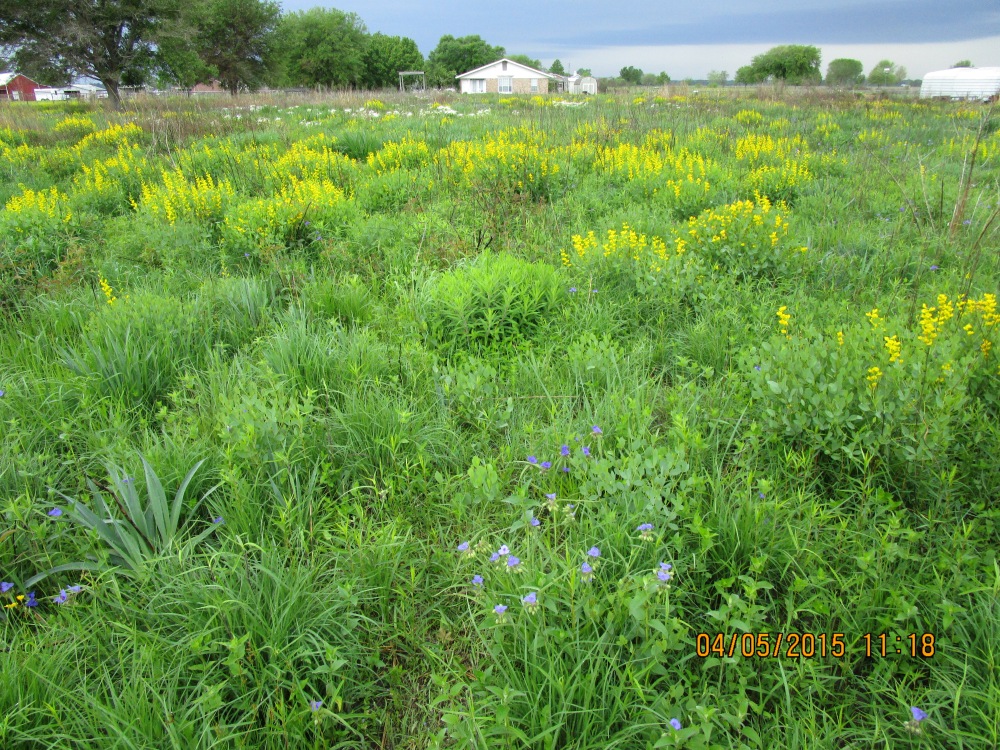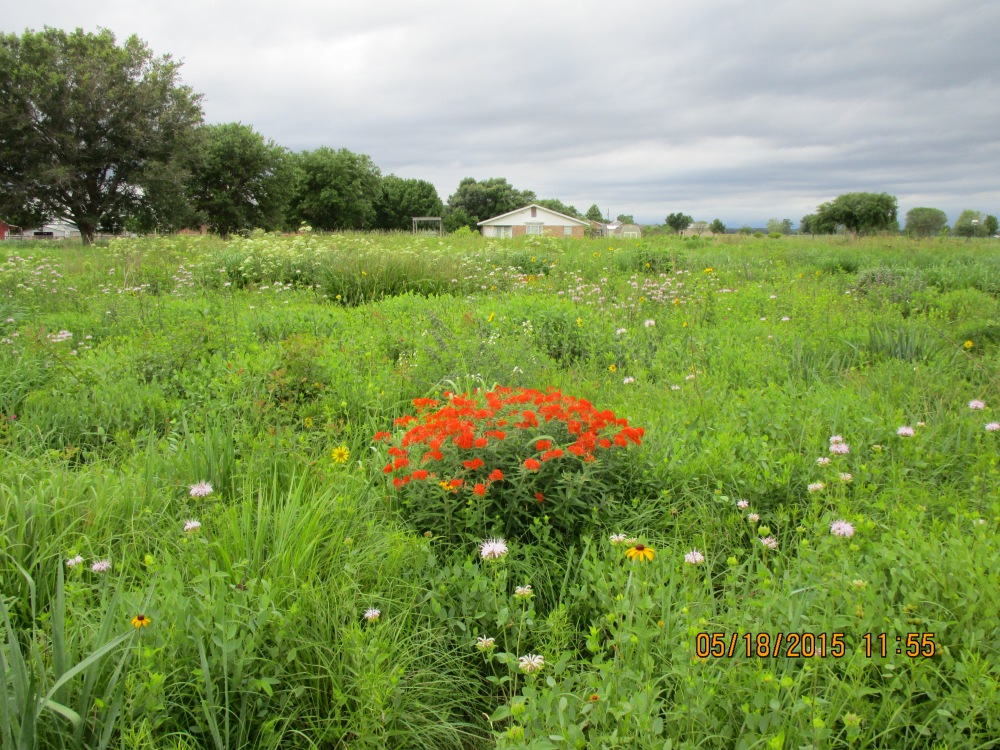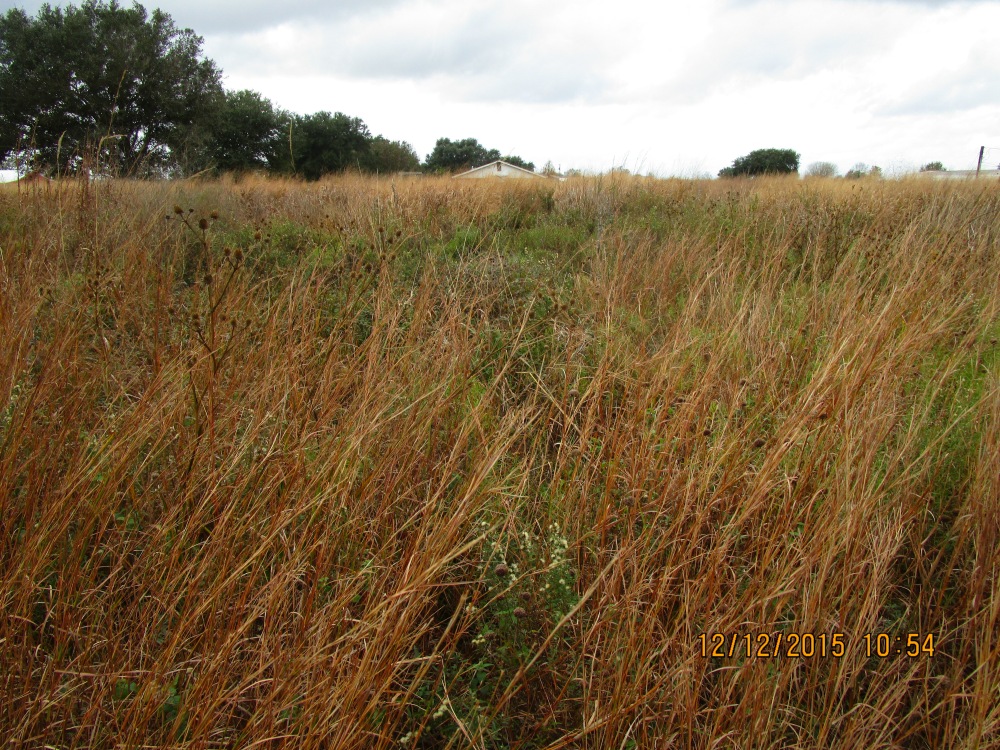
View of Cajun Prairie Gardens from Highway 91 toward our home on January 2013 after an ice and snow storm.
The best way to look at a landscape is to view it through space and time. If you take a single view and look upon it at different times of the year, a story reveals itself before your eyes. In this essay, I will show you a single view during a year (2015) so as to reveal its ever-changing floral-scape. It is not really extraordinary, but it provides an extraordinary view of change and phenology of blooming plants in one view of space through the lens of time.
In future opportunities, I will widen the scope and view the entire yard. Each spot at some point in time is beautiful and noteworthy—snapshots of this beauty are useful in showing how the prairie entertains, but it leads the viewer to a false idea in that the prairie would be presented as beautiful all the time. Lulls in bloom are frequent, and plants seem to bloom in one place now and in another then—thus bouncing across the yard. But this bouncing is part of the story.
Our single view in this effort is a straight shot from the highway from the east to the west across the acre and half prairie toward the house (about 70 yards from the camera lens)—with the house as a focal point obviously challenged during April and May by the large, 20 year old clump of Asclepias tuberosa (Butterfly milkweed) in the foreground. I have included a picture of the view after a 2013 snow and ice event—uncommon in our area–as the introductory picture. I will start with the old growth of 2014 and proceed to the aftermath of the January fire (January 17, 2015)—the most important event of the season. The view of the prairie before the burn and after the burn usually has a powerful impact on the audience. The date and time appear on the actual photograph, usually at the bottom right of the image.
The last picture is among the first that I took with the new camera, which was a gift from Gail at Christmas. It shows the scene on December 29, 2014, as the year ends. With it I can now show the entire year in pictures.
The View Through the Year

























The view shows a sequence of blooming that follows a distinctive pattern:
• February-March—numerous basal rosettes.
• March-April—splash of Baptisia sphaerocarpa and Tradescantia spp.
• April-May—splash of Asclepias tuberosa, Baptisia alba and Monarda spp.
• June—splash of Physostegia sp. and Rudbeckia hirta.
• July—splash of Eryngium yuccifolium and Silphium gracile.
• August—mass of grasses and a rebloom of Asclepias tuberosa.
• September-November—mass of grasses and small bloomers.
Numerous other small bloomers in the foreground or large bloomers in the background are dispersed in the views including species of Gaura, Liatris, Polytaenia, Tephrosia, Scutellaria, Callirhoe, Euthamia, Chamescrista, Echinacea, Hymenocallis and many more. Species literally underfoot are not evident in these photographs, including species of the genera Prunella, Hypoxis, Vicia, Stylosanthes, Phlox, Claytonia, Oxalis, Houstonia, Nothoscordum, Sisyrhinchium, Pityopsis and others.
In addition to the blooming scenes, there are intricate groupings of plants and interesting geometries of the stems of various plants. The overall changes in the scene indicate the good diversity evident in the garden as viewed from the more or less wide-angle view. From the view, one readily gathers the sense of change in the garden from a wildflower garden in spring and early summer to an open meadow in midsummer to a grassland prairie (somewhat oppressive) in the late summer into early winter to a an old field look in the dead of winter.
From the apparent devastation of the winter fire, the prairie rises like a Phoenix from the massive root system with the earliest blooming plants springing into flower within weeks.
Posted by M. F. Vidrine